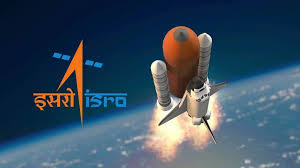
ISRO Chief: Axiom-4 Insights to Boost Gaganyaan Training

 :
| Updated On: 22-Aug-2025 @ 12:06 pm
:
| Updated On: 22-Aug-2025 @ 12:06 pmSHARE
The Indian Space Research Organisation (ISRO) has prepared a comprehensive 4,000-page report that documents the experience of Group Captain Shubhanshu Shukla during his participation in the Axiom-4 mission, along with the training undergone by him and fellow astronaut Prashant B. Nair. The report also includes valuable observations made by ISRO officials stationed in the United States during the mission. According to ISRO Chairman V. Narayanan, the knowledge gained from this mission will play a crucial role in preparing astronauts for India’s ambitious human spaceflight project, the Gaganyaan programme.
Narayanan highlighted that both astronauts, Shukla and Nair, benefited significantly from working with highly experienced teams from SpaceX, NASA, and Axiom Space. Their exposure to international training standards, actual spaceflight procedures, docking operations, and the effects of microgravity on the human body has been carefully documented. He emphasized that this will not only help the current batch of Indian astronauts but also serve as a reference for future astronaut teams.
However, Narayanan also shared that the mission preparations were not without challenges. He recalled a critical incident before the launch, when ISRO engineers detected a leakage in the rocket. Although the international team initially dismissed it as a minor issue, ISRO insisted on a thorough investigation. The leak’s exact location could not be identified immediately, raising serious concerns. Eventually, tests revealed that the problem was not just a small hole but a crack in the fuel line. During testing, the leakage worsened, confirming the gravity of the situation. Narayanan explained that if the rocket had been launched with the crack, vibrations during liftoff could have caused catastrophic failure. As a result, the launch was postponed until the issue was fully resolved. This incident underscored the importance of ISRO’s caution and meticulous approach.
Shubhanshu Shukla, sharing his personal experience, described space travel as entirely different from what training had prepared him for. One of the most surprising aspects, he noted, was the ability to utilize space in three dimensions. Unlike on Earth, where people walk on floors and sit on chairs, astronauts in space can float and move along the ceiling or walls. He admitted that initially, he handed objects to others out of habit, even though nothing would fall in microgravity.
Shukla also spoke about the daily routine aboard the space station. With 16 sunrises and sunsets every day, astronauts had to follow GMT (Greenwich Mean Time) schedules. Sleeping required the windows to be shuttered, though he often wanted to gaze outside because of the breathtaking view of space. Food, however, was a challenge. He confessed to missing Indian cuisine and found the food provided in space bland. Despite being particular about food on Earth, his experience in space humbled him—so much so that upon returning, he told his wife he would eat whatever she cooked.
One of the most emotional moments for Shukla was his first view of Earth from space. During a night pass, he first saw the dark expanse of the sea followed by the dazzlingly lit landscape of India. He admitted that this sight left a lasting impression, and though he has since seen India many times from orbit, the first glimpse was unforgettable.
Prashant B. Nair, who served as the standby astronaut for the Axiom-4 mission, was asked whether he regretted not being part of the spaceflight. Nair responded by stressing the value of teamwork, something ingrained in him by the Air Force. He compared his role to that of Laxman to Shukla’s Ram, highlighting loyalty and support as essential values. On their return, Nair said it felt like Diwali, with the whole nation celebrating their achievement. He also reflected on the difference between training and real experience, likening it to reading a PhD thesis on the smell of roses versus actually smelling one—emphasizing that the essence of spaceflight can only be understood through firsthand experience.
In conclusion, the Axiom-4 mission has provided ISRO with invaluable insights into astronaut training, space operations, and international collaboration. It also demonstrated ISRO’s vigilance in ensuring safety during critical mission phases. The experiences of Shukla and Nair—ranging from technical challenges to emotional and cultural reflections—will directly contribute to shaping the future of India’s human spaceflight programme.